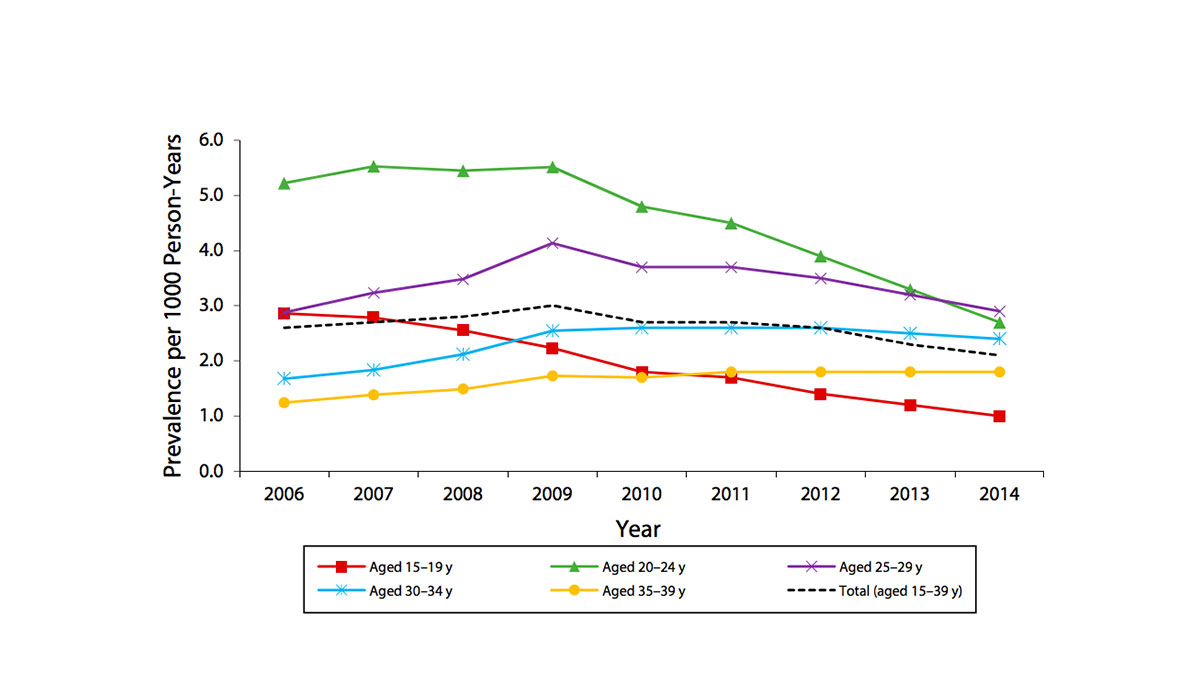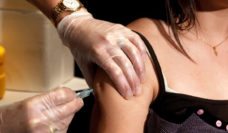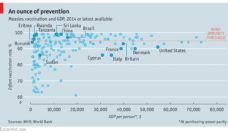The human papillomavirus (HPV) vaccine was revolutionary when it hit the market. It was the first vaccination to prevent cancer caused by specific strains of HPV. It also helps prevent anogenital warts, which are growths seen around the anus and genitals. The vast majority of cases are caused by HPV types 6 or 11, both of which are targeted by the HPV vaccine.
A recent study by researchers from the Centers for Disease Control and Prevention used data from health insurance plans between January 2006 and December 2014, including various types of insurance claims, to measure prevalence of anogenital warts in the United States. Information from 35 million individuals was analyzed.
The figure above shows wart prevalence in women. Beginning in 2008 and 2009, prevalence declined significantly in women aged 15 to 19 years, 20 to 24 years, and 25 to 29 years. The decrease in cases was greatest for women between 15 and 24.
Rather, the drop is likely due to women being vaccinated and providing herd protection to men who have not been vaccinated.
The researchers also noticed a significant decrease in anogenital wart prevalence in men aged 20 to 24 years. This is likely not due to men being vaccinated against HPV since vaccination rates in adult men have been low. Rather, the drop is likely due to women being vaccinated and providing herd protection to men who have not been vaccinated. Herd protection refers to population wide immunity that occurs when a large enough proportion of the population has been vaccinated to slow the spread of disease.
Though herd protection appears to be working to some degree, HPV vaccination rates need to increase. The HPV vaccine is now recommended for women up to 26 years of age and men up to 21 years of age. Nationally, 60% of teens have had one or more doses. Increased vaccination rates among teens and young adults will confer greater protection to the population, further preventing the spread strains of HPV that lead to both cancer and anogenital warts.
Databyte via Elaine W. Flagg and Elizabeth A. Torrone, Declines in Anogenital Warts Among Age Groups Most Likely to Be Impacted by Human Papillomavirus Vaccination, United States, 2006–2014. American Journal of Public Health.













